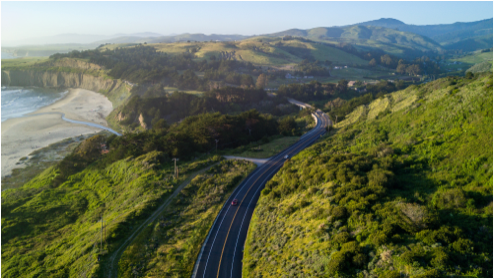Courts Will Not Second-Guess Public Entities When it Comes to Design Immunity
- Garret D. Murai
- Apr 29, 2024
- 3 min read

It was a bizarre confluence of events. Jorgen Stufkosky was driving on SR-154 in Santa Ynez, California. Martha Aguayo was driving on the same highway ahead of Stufkosky when she struck a deer causing it to fly across the centerline into traffic from the opposite direction. The deer struck a SUV causing its driver to lose control. The driver of the SUV crossed the same centerline where he collided head on with Stufkosky, killing him.
Stufkosky’s children later sued the California Department of Transportation in the case Stufkosky v. California Department of Transportation, 97 Cal.App.5th 492 (2023), alleging that their father’s death was due to Caltrans’ negligent design of SR-153, inadequate number of deer crossing signs, and its high posted speed limit.
While in the trial court, Caltrans filed a motion for summary judgment on the ground that Caltrans was immune from liability under Government Code section 830.6, the so called “design immunity” statute.
The trial court agreed and the Stufloskys appealed.
The Appeal
On appeal, the 2nd District Court of Appeal explained that, while the existence of triable issues material fact are usually sufficient to defeat a motion for summary judgment, they are not fully applicable to cases involving design immunity under Government Code section 830.6:
‘Design immunity is . . . often raised on [a] motion for summary judgment or nonsuit, [thereby] enabling the trial court to find the defense established as a matter of law.’ ‘The normal rules governing a motion for summary judgment, and requiring its denial if any triable issue of fact appears, are not fully applicable [to cases involving design immunity under … section 830.6]. For example, the defendant is not required to prove to the court that the design or plan was in fact a reasonable one. Instead, the defendant is merely required to adduce any “substantial evidence” that a reasonable public employee or legislative body could have approved the plan or design used under [section] 830.6. Thus, when the defendant files a motion for summary judgment, the existence of a possible conflict of evidence, as shown by the proof submitted on the motion, will not create a triable issue on this aspect of the defense that can defeat a summary judgment. . . .’
Government Code section 830.6, explained the Court of Appeal, shields a public entity from liability if the public entity can show three elements:
A causal relationship between the plan and the accident;
Discretionary approval of the plan prior to construction; and
Substantial evidence supporting the reasonableness of the design.
The Stufkoskys contended that Caltrans, in prevailing on its motion for summary judgment, failed to show that it “expressly consider[ed]” alternative design solutions that may have prevented the accident such as lowering the speed limit, placing more deer crossing signs, or installing median barriers. “[I]n sum,” explained the Court “Appellants’ theory of the case . . . is that Caltrans designed SR-154 without certain specific features they contend would have made the highway safer.”
However, held the Court of Appeal, Caltrans did not need to “expressly consider” all potential or possible designs. “[T]he law’s purposes is to avoid the dangers involved in permitting reexamination and second-guessing of governmental design decisions in the context of trial.” Further, explained the Court, “[l]imiting design immunity to those features expressly considered would be tantamount to requiring the public entity to address all conceivable design features during the approval process. They do not need to do so.”
Relying on the recent Supreme Court decision of Tansavatdi v. City of Rancho Palos Verdes, 14 Cal.App.5th 639 (2023), the Stufkoskys argued that the trial court failed to address their claim that Caltrans failed to warn of the dangerous condition of deer crossings on SR-154. In Tansavatdi, the Supreme Court held that Government Code section 830.6 did not shield a public entity from liability for its failure to warn the public about the abrupt ending of a bike lane that forced cyclists into traffic.
However, the Court of Appeal distinguished Tansavatdi, noting that the Tansavatdi case essentially involved a “concealed trap” because there were no warnings that bike lane was ending. Here, however, explained the Court of Appeal, Caltrans’ design plans for SR-154 included the quantity and placement of deer crossing signs evidencing that Caltrans had considered and warned the public of the potential danger.
Conclusion
The Stufkosky decision underscores that courts will not “second-guess” the design decisions of public entities so long as a public entity provides evidence that it plans underwent review and that the plans were reasonable under prevailing professional standards. has design plans and provided warnings, the sufficiency of which shall be left to the determination of the appropriate agency/department/public entity, it shall be shielded by design immunity.




Comments